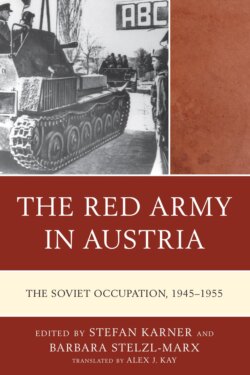Читать книгу The Red Army in Austria - Группа авторов - Страница 14
PRESIDENT ROOSEVELT’S AUSTRIAN POLICY
ОглавлениеAmerican planning for the post-war world started early, long before the Second World War came to an end. The elite Council on Foreign Relations of the State Department in New York initiated the planning work before the United States entered the war. After the Pearl Harbor attack the State Department took over the entire post-war planning effort in 1942 and systematically and very deeply explored all options for the restructuring of the post-war world (“Notter Committee,” named after the secretary of this planning committee). The “Austrian Question” was discussed in various contexts. It was part of the debates about German dismemberment (e.g., a breakup of the “Third Reich” into smaller units); the (re)creation of a Danubian entity (e.g., federation, confederation, customs union), particularly pushed by the principal US ally Winston Churchill; and finally the option of reestablishing an independent Austria in the form or shape of pre-Anschluss Austria.12
Starting in 1943, the ideas contemplated separately in American, British, and Soviet planning councils (later the “Free French” too) culminated in the discussions of the Moscow Foreign Ministers Conference in late October 1943. Here the Allied powers decided to reestablish an independent Austria in the pre-Anschluss borders. The Allied “Moscow Declaration” on Austria of November 1943 would become the principal foundational document of the Second Austrian Republic; its contents were selectively adapted and proclaimed by the Provisional Government of Karl Renner on April 27, 1945.13
The Moscow Declaration was a highly ambiguous document. It proclaimed Austria as “Hitler’s first victim” and promised to reestablish the country; Austrians were reminded that the Allies expected a contribution from them toward their own liberation; at Soviet insistence the Allied declaration reminded Austria(ns) that they also bore responsibility for Hitlerite war crimes. The Moscow Declaration was in part an Allied propaganda document that aimed at encouraging domestic Austrian resistance against the Hitler regime. The Moscow Declaration was followed up by the determination of Austrian occupation zones by the “European Advisory Commission” established by the Allied foreign ministers in Moscow. The United States, Great Britain, France, and the Soviet Union would occupy Austria jointly like they planned to do in Germany. But Austria would be treated differently after the war as a “liberated country” from Germany—a “defeated country.” Austria would be governed by a four-power Allied Commission, not a Control Commission. The Austrian “peace treaty” would be a “state treaty.”14 By the end of the war at the latest, however, the importance of Austria had been clearly recognized in Washington: “Austria is a strategic center for which there is bound to be a political struggle, the outcome of which will affect the economic well-being and stability of Southeastern Europe, an area of tension out of which WWI and II arose and where the dangers of future conflict could arise.”15
